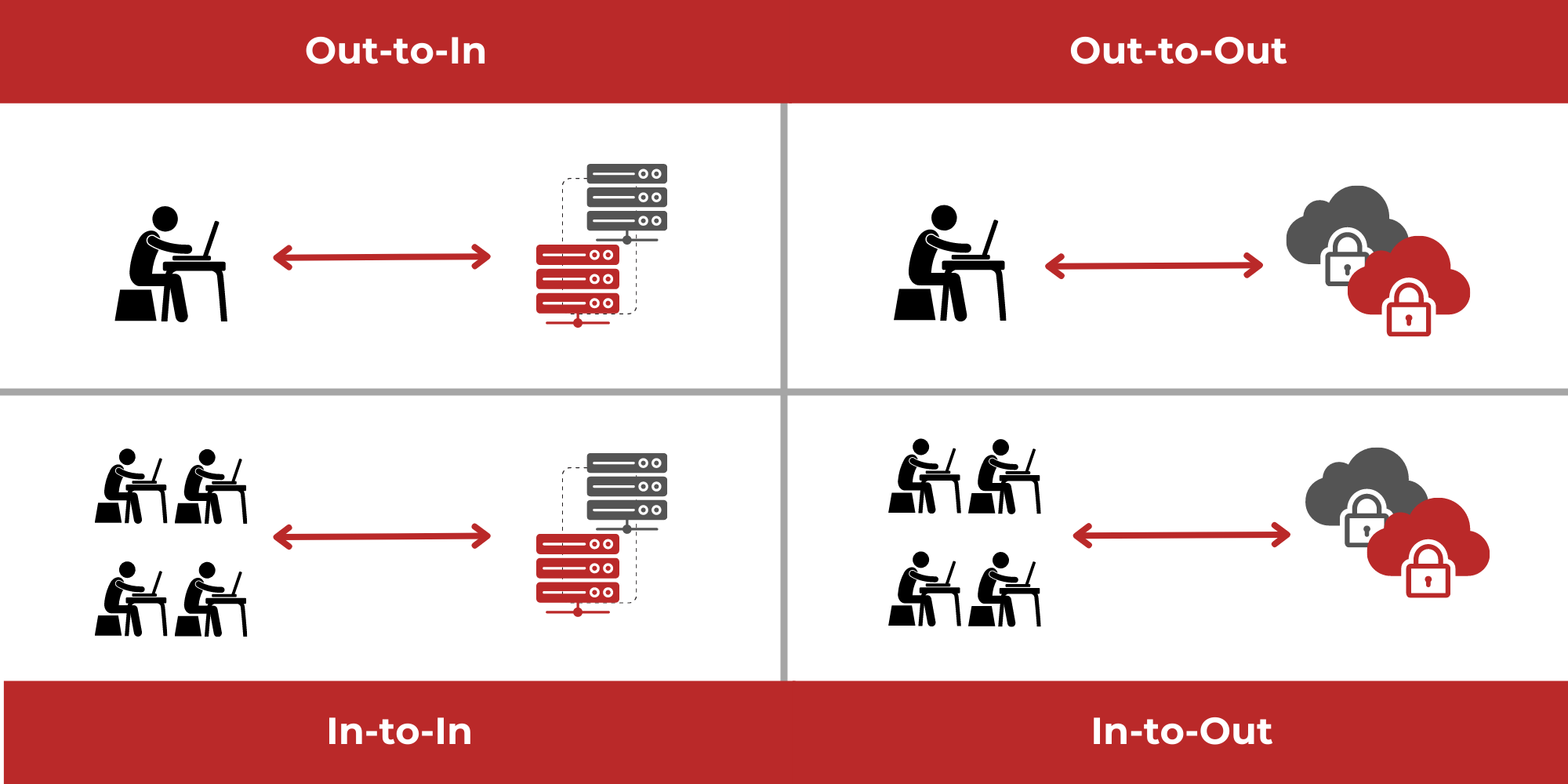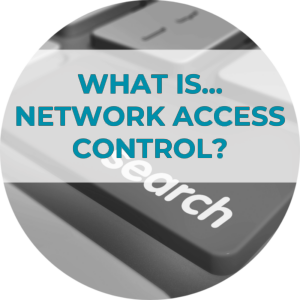
What Is Network Access Control (NAC)?
What Is Network Access Control (NAC) And How Does It Work?
What is Network Access Control (NAC)?
Network access control (NAC), sometimes called network admission control, is a key framework within the cybersecurity industry that serves as a rampart against an array of potential threats lurking in today’s digital landscape.
NAC systems ensure that only permitted authorized users and devices can interface with sensitive data and critical systems, making them a necessity when it comes to strengthening digital infrastructure.
This comprehensive guide dives into the world of Network Access Control, exploring its different types, complex mechanisms, and transformative advantages.
How Does Network Access Control Work?
Network Access Control is a critical component in the cybersecurity landscape. NAC governs who or what can access a network and enhances its security by ensuring that only authorized devices and users gain entry. Below are some key mechanisms that make NAC effective in maintaining a secure networking environment:
Device Identification & Profiling
The first step in the NAC process is device identification and profiling. When a device tries to connect to a network, NAC systems gather identifying information about the device, such as type, manufacturer, operating system, and other attributes.
This initial profiling is crucial as it allows the network administrators to know exactly what is attempting to gain access, making it easier to enforce security policies.
Health Assessment
After identification, a health assessment is conducted on the device to ensure compliance with predefined security policies. For example, an NAC system will scan the device for up-to-date antivirus software, firewalls, or known vulnerabilities. If the device fails to meet these criteria, it could be denied access or directed to a remediation portal to resolve the issues.
Authentication and Authorization
Once a device passes the health assessment, it undergoes authentication and authorization. This step usually involves a user entering credentials like a username and password. This process ensures that the device and individual user are authorized to access the network.
Policy Enforcement
Policy enforcement comes into play after successful authentication. NAC systems enforce network policies that dictate the level of access granted to each device and user. For instance, an employee might gain full access to internal resources, while a guest may only be able to access the internet.
Continuous Monitoring
After gaining access, NAC doesn’t just stop there. Continuous monitoring is in place to keep tabs on devices and their activities while connected to the network. This feature identifies changes in a device’s compliance status and suspicious activities.
Threat Response
NAC systems respond quickly in the event of a threat or policy violation. Actions can range from simple notifications to network administrators to quarantining the device or even fully disconnecting it from the network.
Types of Network Access Control
No understanding of network access control is complete without diving into the various types of NAC systems available. Each type serves a unique purpose and focuses on different aspects of network security.
Here, we’ll discuss four common types of NAC:
- Endpoint-Based
- Identity-Based
- Behavior-Based
- Policy-Based
Endpoint-Based NAC
This type of NAC system primarily focuses on the security status of devices or ‘endpoints’ attempting to connect to the network. This type of NAC evaluates factors like operating system patches, antivirus software, and firewall status.
Endpoint-based NAC systems scrutinize these elements to ensure that only compliant devices can access network resources. Non-compliant devices are typically redirected to a remediation portal or denied network access.
Identity-Based NAC
Identity-based NAC centers around the user’s identity. Instead of concentrating solely on the device, this approach assesses the credentials and roles of individual users.
Upon successful authentication, an identity-based NAC system assigns network privileges based on pre-defined roles, like admin, employee, or guest. These features add an extra layer of security by ensuring that users can only access areas of the network that are pertinent to their job responsibilities.
Behavior-Based NAC
Behavior-based NAC takes a more dynamic approach to network security. Rather than relying only on initial authentication or device compliance, this type of NAC continuously monitors the behavior of devices and users on the network.
Behavior-based NAC systems evaluate factors such as data transfer rates, the frequency of connection requests, and types of accessed files. If any unusual or suspicious activities are detected, the system can take immediate action, like issuing alerts or restricting access.
Policy-Based NAC
Policy-based NAC enforces organizational policies across the network, including device compliance and user behavior. These policies are pre-defined by network administrators and can be as simple as time-based access restrictions or as complex as granular role-based access controls.
Policy-based NAC enhances security by maintaining a consistent set of rules that all devices and users must adhere to, making it easier to manage and monitor network activity.
Advantages of Implementing Network Access Control Solutions
One of the most compelling advantages of implementing Network Access Control solutions is enhanced network security. NAC systems ensure that only authorized and compliant devices and users can access your network, significantly lowering the risk of unauthorized access and data breaches.
They provide a robust layer of security by conducting device health assessments, user authentications, and continuous monitoring, making it an integral component of any modern cybersecurity strategy.
Another critical benefit of NAC is the mitigation of insider threats. Not all security risks come from outside your organization; sometimes, they come from within. NAC systems can prevent internal threats by setting stringent access controls based on roles that limit network resources that an internal user can access.
This reduction in unnecessary access means there is a reduced attack surface, making it more challenging for internal and external actors to exploit network vulnerabilities.
NAC solutions also assist in regulatory compliance and real-time threat detection. For businesses that need to adhere to industry-specific regulations like HIPAA in healthcare or PCI DSS in retail, NAC systems can provide the requisite controls to meet these standards.
Additionally, their ability to continuously monitor network behavior enables real-time threat detection, allowing for swift responses to any abnormal activities or potential violations.
Common Use Cases for Network Access Control Software
Network Access Control (NAC) solutions aren’t just theoretical tools; they serve practical purposes and address specific challenges across various operational scenarios. Whether managing the security implications of BYOD policies or ensuring secure remote access, NAC plays a pivotal role in solving real-world problems.
Bring Your Own Device (BYOD) Environments
The adoption of Bring Your Own Device (BYOD) and unmanaged device policies has made it easier for employees to use their personal devices for work purposes. While this offers flexibility, it also presents a unique set of security challenges.
NAC solutions assess the security posture of these personal devices before allowing them network access. The benefits of using NAC in a BYOD environment include enforcing security policies, isolating non-compliant devices, and reducing the risk of unauthorized access or data breaches.
Guest Network Management
Guest networks are essential in today’s business environment to provide network access to visitors without compromising the integrity of the main network.
NAC helps ensure guests can only access specific parts of the network, effectively isolating them from sensitive business resources. This approach improves the visitor’s experience and adds a layer of security to prevent unauthorized access.
Remote Access Control
The rise of remote work has underscored the need for secure remote access solutions, and NAC systems are invaluable in this context. They assess the health and compliance of remote apps and devices attempting to connect to the network, ensuring they meet predefined security standards. After this verification, they can establish secure tunnels and protect the network from potential threats.
Internet of Things (IoT) Security
As IoT devices become more prevalent, they introduce new vulnerabilities into the network. NAC solutions can authorize and monitor these devices, providing an additional layer of security.
By continuously assessing the compliance of IoT devices and taking immediate action in case of irregularities, NAC systems prevent unauthorized access and potential threats from exploiting these devices.
Zero Trust Network Architectures
Zero Trust Network Architecture is built on the premise of “never trust, always verify,” and NAC is a cornerstone in this approach. NAC solutions continuously verify the identity and compliance of devices and users, regardless of location or access level.
These NAC solutions stringently enforce policies, allowing only authorized entities to access specific network resources and upholding the principles of a Zero Trust environment.
Capabilities of Network Access Control
An effective Network Access Control system is the sum of its parts. Each of its capabilities plays a pivotal role in securing a network. These functionalities are the building blocks that enable NAC systems to secure networks, manage devices, and effectively respond to threats:
- Policy Lifecycle Management: One of the core capabilities of NAC solutions is the management of security policies from creation to enforcement. This feature allows administrators to easily design, implement, and update policies.
- Device Visibility and Profiling: NAC solutions identify and categorize devices connected to a network. This feature offers a real-time view of all devices, whether they’re corporate-owned or personal. Profiling helps users understand the nature of each device, its operating system, and installed applications, contributing to informed security decisions.
- Guest Networking Access: NAC systems can generate temporary credentials and enforce policies to limit network access for guests, thereby safeguarding the core business network from potential risks.
- Security Posture Check: Before granting access to the network, NAC solutions assess the security posture of devices and users. NAC solutions check for updated antivirus software, firewall configurations, and other security features. Non-compliant devices can be rerouted to a remediation page or denied access altogether.
- Incidence Response: In the event of security incidents like unauthorized access or potential breaches, NAC solutions can automatically isolate affected devices, notify administrators, and even trigger pre-defined security protocols to mitigate risks.
- Bi-directional Integration: NAC solutions often support bi-directional integration with other security tools like SIEM systems, firewalls, and endpoint security solutions. This level of integration allows for a more cohesive and effective security infrastructure.
Importance of Preventing Network Access Control Problems
Network Access Control (NAC) is more than a supplementary security measure; it’s a cornerstone of a robust cybersecurity strategy. By preventing unauthorized access, limiting the lateral movement of threats, and safeguarding sensitive data, NAC plays a critical role in strengthening an organization’s overall security posture.
Investing in proper NAC implementation and management is not just about avoiding potential risks; it’s about proactively protecting your network and its valuable assets, making it an essential component for any security-conscious organization.
In addition, the versatile capabilities of NAC, from policy management to real-time monitoring, allow it to integrate seamlessly with other security tools, resulting in a more cohesive and responsive security infrastructure capable of addressing a wide array of cyber threats.
As our connected world continues to evolve with the proliferation of remote work, BYOD policies, and IoT devices, the complexity of network environments will only increase. In this ever-changing landscape, NAC serves as both a gatekeeper and a guardian, ensuring that your network remains a secure foundation upon which your business can grow and thrive.
Ericom’s Approach to Network Access Control Solutions
At Ericom, we understand that the modern network landscape is constantly evolving. That’s why we design our approach to Network Access Control to be as flexible as it is robust, accommodating everything from remote work environments to IoT device management.
With features like real-time monitoring, policy lifecycle management, and seamless integration with existing security tools, our NAC solutions go beyond just granting or denying access—they serve as a comprehensive layer of defense for your network.
Ready to take your network security to the next level? Don’t leave your organization’s safety to chance. Contact us today to learn more about how our cutting-edge Network Access Control solutions can give you peace of mind in the ever-evolving digital landscape.

